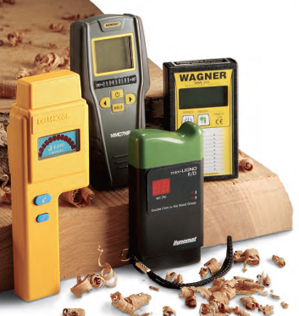
I cannot begin to tell you how frustrated I am with a current cabinet project. I purchased 100 board feet of kiln-dried rough yellow birch from a local reputable wood mill. This was supposedly top quality material that I paid $4.50 per board foot. Upon inspection, much of it was warped and twisted and had to be discarded. Subsequently, even the boards that appeared to be perfectly straight, warped badly upon machining due to the stress relief that occurs when a board is planed. What went wrong here? Did I buy wood that was not properly dried? How do I avoid this very frustrating and costly error in the future? – Jim Hanna
Chris Marshall: Jim, if much of the original birch was warped and in poor shape, I probably would have rejected all of it and had the source give you better material. There’s a chance it may have been reactive wood coming from a tree that was leaning and carrying its load unevenly. It’s possible the wood was poorly dried, but most reputable companies will want kiln drying to be done in a carefully controlled fashion so these sorts of problems don’t happen in the first place — it makes them look bad. In the end, it’s hard to say exactly why your lumber didn’t behave well for you. I would still complain to the company from which you bought it and see what they’re willing to do for you. If they don’t make things right, shop elsewhere next time.
In terms of other things you can do to avoid lumber defects, make sure and find out what the moisture content of the wood is before you buy it. For furniture lumber, it should be around 8 to 11 percent. Buy a moisture meter and check the lumber before you use it. Give any new lumber time to reach equilibrium with the humidity level in your shop, especially if it is coming from a wetter or drier area than you live. Waiting at least a few weeks is a good idea. Then, of course, stack your lumber in a dry place that, ideally, matches the humidity level in your shop. And, do your rough milling in one stage, let the stock sit for a few days to “move” if it’s going to do that, then take it down to final proportions from there.
If you need some education about moisture meters, check out a recent article we published on the subject in the April 2013 print issue (“Moisture Meters in the Home Shop,” p. 64).
Tim Inman: Was the wood OK when you bought it? Did you check the EMC moisture content? If it was nice when you purchased it, and you have stored it well, then indeed something is wrong. My first move would be to return to the supplier (whom you say is a reputable shop) with your questions, and seek a remedy. They may agree to exchange the wood for you. Don’t suffer in silence on this. It isn’t fair to the seller to complain about a problem they may not know you (or they) have. Give them a chance to do the right thing. It is what keeps them in business, and it will help them keep their suppliers in line, too. On the other hand, if you bought sight unseen, then the old business rule of “caveat emptor” applies.





